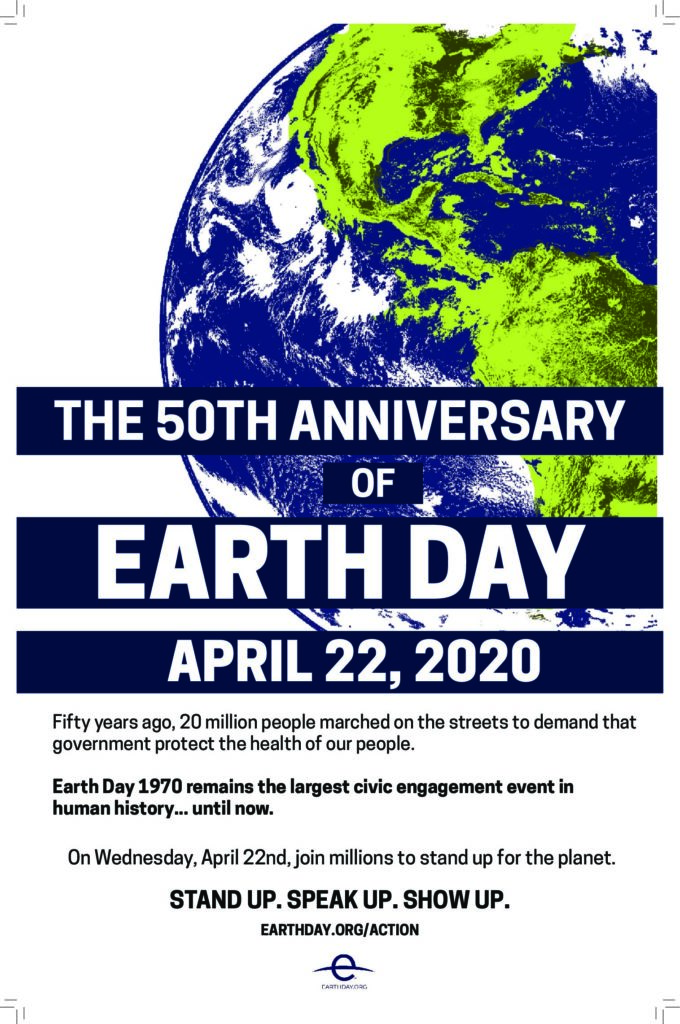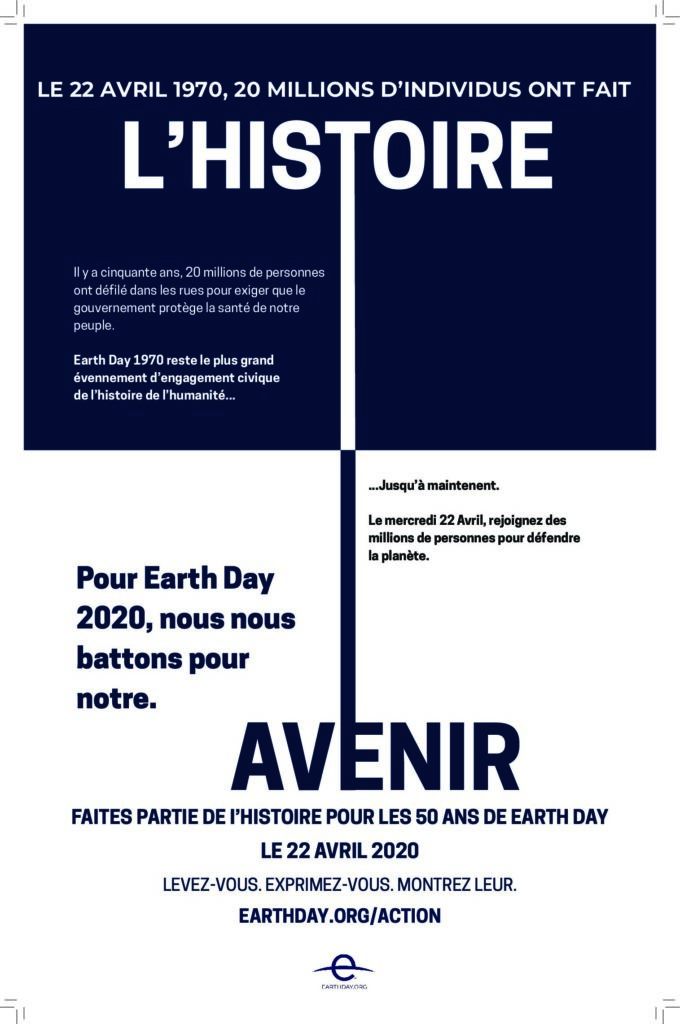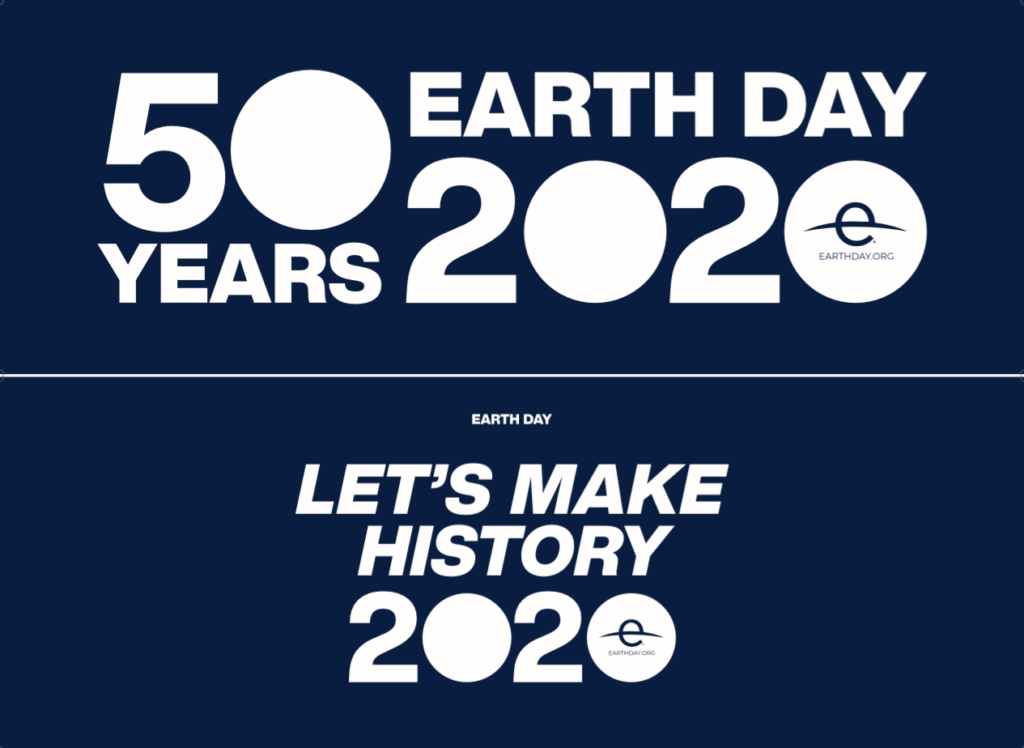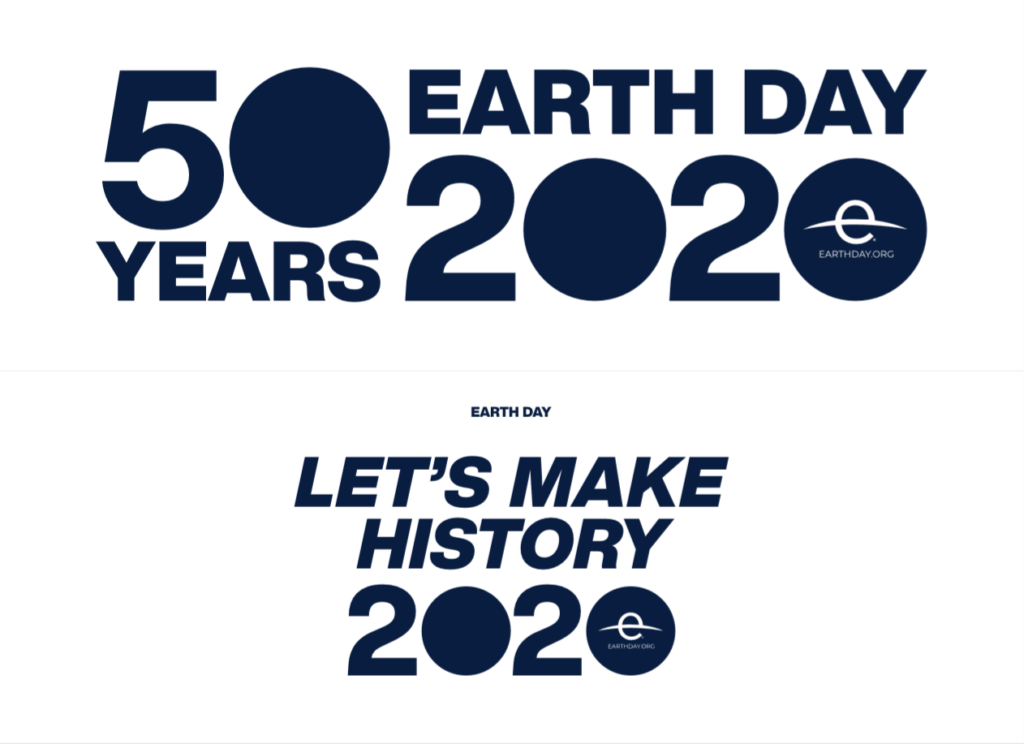About Us
Earth Day 2020
The 50th anniversary of
Earth Day was unlike any other.
With COVID-19 causing public health lockdowns around the world, Earth Day, the planet's largest civic event, went entirely digital for the first time in its history. On every continent, in dozens of languages, humanity celebrated our shared home.
We resolved that after the COVID-19 pandemic ended, we would restore our Earth to a cleaner, fairer, better world for everyone.
THIS IS HOW WE ACTED
PEOPLE TOOK ACTION
AS EARTH DAY WENT DIGITAL
Global 12-hour Live Streaming Music and Speaker Event
FIND THE EARTH DAY 2020 POSTERS AT THE BOTTOM
OF THIS PAGE
Local leaders CREATED events around the world
This map traces their work.
Select the date April 1, 2020, on the left to see our 2020 events.
Worldwide demonstrations and volunteer events pre-COVID built up energy for the day
We Built on Earth Day'S Legacy
The first Earth Day in 1970 mobilized millions of Americans for the protection of the planet. On April 22, 1970, 20 million Americans — 10% of the U.S. population at the time — took to the streets, college campuses and hundreds of cities to protest environmental ignorance and demand a new way forward for our planet. The first Earth Day is credited with launching the modern environmental movement and is now recognized as the planet's largest civic event.
Earth Day led to passage of landmark environmental laws in the United States, including the Clean Air, Clean Water and Endangered Species Acts. Many countries soon adopted similar laws, and in 2016, the United Nations chose Earth Day as the day to sign the Paris Climate Agreement into force.

Photo Credit: University of Michigan School for Environment and Sustainability via Flickr 
New York City's Fifth Avenue is filled with thousands of people when the street was closed to motor traffic for the First Earth Day on April 22, 1970
Image by © Bettmann/CORBIS | Photo Credit: Tommy Japan via Flickr
Climate strikers take to the streets of New York City in September 2019 for global strikes coordinated by the Fridays for Future youth climate movement | Photo Credit: Inma Galvez-Shorts
“Despite that amazing success and decades of environmental progress, we find ourselves facing an even more dire, almost existential, set of global environmental challenges, from loss of biodiversity to climate change to plastic pollution, that call for action at all levels of government,” said Denis Hayes, the organizer of the first Earth Day in 1970 and Earth Day Network’s Board Chair Emeritus.
“Progress has slowed, climate change impacts grow, and our adversaries have become better financed,” said EARTHDAY.ORG president Kathleen Rogers. “We find ourselves today in a world facing global threats that demand a unified global response. For Earth Day 2020, we will build a new generation of environmentalist activists, engaging millions of people worldwide.”
the History of Earth Day
Discover the history of Earth Day, and our plans, half a century later
Earth Day 2020 FAQ
Earth Day is April 22 of every year. April 22, 2020 marked 50 years of Earth Day.
The theme for Earth Day 2020 was climate action. The enormous challenge — but also the vast opportunities — of action on climate change have distinguished the issue as the most pressing topic for the 50th anniversary.
Climate change represents the biggest challenge to the future of humanity and the life-support systems that make our world habitable.
Earth Day was a unified response to an environment in crisis — oil spills, smog, rivers so polluted they literally caught fire.
On April 22, 1970, 20 million Americans — 10% of the U.S. population at the time — took to the streets, college campuses and hundreds of cities to protest environmental ignorance and demand a new way forward for our planet.
The first Earth Day is credited with launching the modern environmental movement, and is now recognized as the planet's largest civic event.
The first Earth Day in 1970 launched a wave of action, including the passage of landmark environmental laws in the United States. The Clean Air, Clean Water and Endangered Species Acts were created in response to the first Earth Day in 1970, as well as the creation of the Environmental Protection Agency (EPA). Many countries soon adopted similar laws.
Earth Day continues to hold major international significance: In 2016, the United Nations chose Earth Day as the day when the historic Paris Agreement on climate change was signed into force.
On Earth Day 2020, we seized all the tools and actions that we have, big and small, to change our lives and change our world, not for one day, but forever.
While the coronavirus may force us to keep our distance, it did not force us to keep our voices down. The only thing that will change the world is a bold and unified demand for a new way forward.
We may be apart, but through the power of digital media, we’re also more connected than ever.
On April 22, we showcased 24 hours of action in a global digital mobilization that drove actions big and small, gave diverse voices a platform and demanded bold action for people and the planet.
Over the 24 hours of Earth Day, the 50th anniversary of Earth Day filled the digital landscape with global conversations, calls to action, performances, video teach-ins and more.
While Earth Day went digital, our goal remained the same: to mobilize the world to take the most meaningful actions to make a difference.
No matter where you are, you can still make a difference. Check out Our Work to keep the momentum going. Together, we can save the Earth.
POSTERS
After April 22, these still look great.
Not to be used for profit or other commercial purposes.
#1

LANGUAGES
#2

LANGUAGES
BANNERS
For your marches, rallies, and parades












